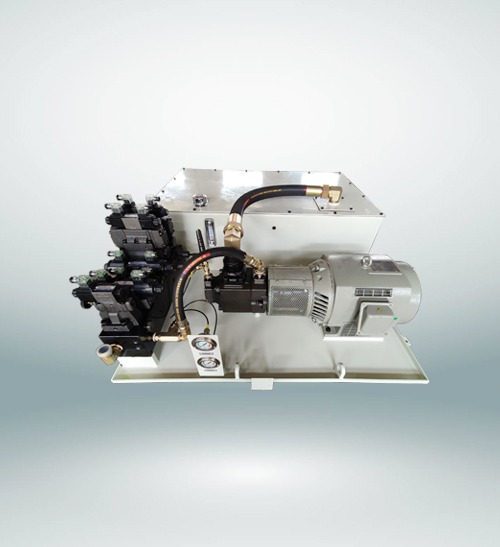
Cause and Treatment of Pressure Loss in Hydraulic System of Roller Press
(1) Fault phenomenon and analysis
The hydraulic system of a PR140/110 roller press suddenly experienced a pressure drop, which was running at about 4MPa, and the pressure could not be increased. The field control cabinet shows that the hydraulic pump of the hydraulic station is pressurized all the time, but the pressure has not changed.
Check the site and find that the pointer of the pressure gauge at the outlet of the hydraulic pump is always at 0 although the motor is running during on-site manual pressurization, indicating that the fault is between the proportional direction valve at the connection of the motor and the pressure gauge at the outlet of the hydraulic pump. The possible faults are: a The coupling between the motor and the hydraulic pump falls off, causing the motor to work, but the hydraulic pump does not operate; b. The hydraulic pump itself fails; c. The connecting rubber hose between the hydraulic pump outlet and the proportional directional valve is broken or falls off.
(2) Troubleshooting
The hydraulic station is a 7.5KW motor driven high-pressure gear pump, which is completely immersed in oil in the oil tank. When the oil in the oil tank is drained and manually pressurized, it is found that there is upward fuel injection on the upper side of the high-pressure gear pump. Take the hydraulic pump out of the oil tank for inspection, and cracks are found on one side of the hydraulic pump housing.

(3) Treatment measures
Since the pump was in the oil tank, the model and size could not be found at ordinary times, and the pump was operated intermittently for a short time without spare parts. In order to minimize the impact on production, it was decided to repair the hydraulic pump.
The pump casing is made of cast aluminum, and the thickness is not large from the crack. If groove welding method is adopted, it may be scrapped. After loosening the four bolts of the hydraulic pump, the crack can be closed, and only a small crack trace can be seen. Therefore, it is analyzed that the shell is tightly clamped with a splint outside the shell, which should be able to close the crack and maintain production in a short time. According to the actual situation on the site, two plywood with a length of 120mm and a width of 50mm were made of 20mm thick steel plate. The plywood was fixed with two M16 * 180 bolts. Before the bolts were fixed, an appropriate amount of sealant was applied between the cracks. After the plywood was fixed, manual pressurization was used to find that although there was a small amount of leakage, the pressure could reach the operating value.
The repair method only took more than 6 hours from shutdown to production resumption. After being put into operation, normal production can be achieved, avoiding a long shutdown. After one month of operation, replace the pump with a new one by taking advantage of the downtime.